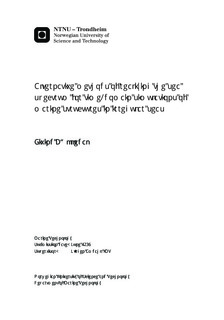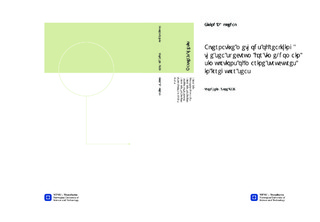| dc.description.abstract | For dynamically sensitive structures or marine structures subjected to large displacements the extreme response is often determined on the basis of short term time domain simulation of extreme sea states using the environmental contour line method. A challenge with time-domain simulation is the representation of the sea spectrum. For linear analysis and small displacements it is common to use Fast Fourier Transform (FFT) of the sea spectrum. For non linear simulations the computational requirements of the FFT becomes prohibitive. The purpose of this report is to contribute to the development and verification of simplified methods of realizing the sea spectrum for time domain analysis. The report consists of three parts. First, a review of theoretical models used in the simulation is performed. It is focused on the probabilistic modelling of ocean waves, methods of establishing kinematics and also various methods of simulating the sea spectrum. From these theories, a \textit{MATLAB} algorithm is created to perform a second order surface realization and estimate the associated kinematics. The next part consists of a set of introductory studies. The objective was to identify possible methods of reducing the computational efforts of a second order process. Alternative ways of simulating the wave spectrum for a linear process with few frequency components have been investigated, and also the required length of initiation time to avoid transient behaviour. Furthermore a test case for the mentioned \textit{MATLAB} algorithm was performed, and comparisons were made with both linear approximations and by fitting a Stokes V wave to the extreme crest. In the final part of the work, a short term analysis of quasi-static and dynamic response was carried out for a vertical bottom fixed cylinder, using 30 seed variations. Two different methods for representing the sea spectrum are compared, the FFT and peaked EAP. The simulations were conducted using both linear and second order wave theory, and additionally a combination of these where the second order contributions are only included around the largest linear response, referred to as \textit{Spool-to-Extreme-Linear-Response} (SELR).From the linear simulations of the various spectral decompositions it is found that the method using an equal area principle with increased representation around the structure's eigenfrequency has best agreement with the commonly applied FFT. While the other few-component methods suffer from large underestimations for some of the cylinders compared to the FFT, the results from this method is consistently in agreement when the number of wave components are larger or equal to 100. This provides a marked reduction in computer efforts as compared to the 1000 component FFT method.\\The results from the test simulation of the \textit{MATLAB} algorithm show a kinematic profile and static load calculation which agrees very well with that of a Stokes' V wave. It is also found that the well known weakness of the Wheeler stretching of linear and second order theory are also present for these tests, hence confirming the second order calculations. The extreme value statistics obtained in the final study show that second order contributions can be neglected for mass loads, but must be included when drag loads are dominating. The alternative methods of simulating a second order process, by peaked EAP or by the SELR, show both very good agreement with the complete second order simulation of the 500 component FFT. The time savings of these methods are substantial, hence these methods could provide an efficient way of simulating second order seas. | nb_NO |

